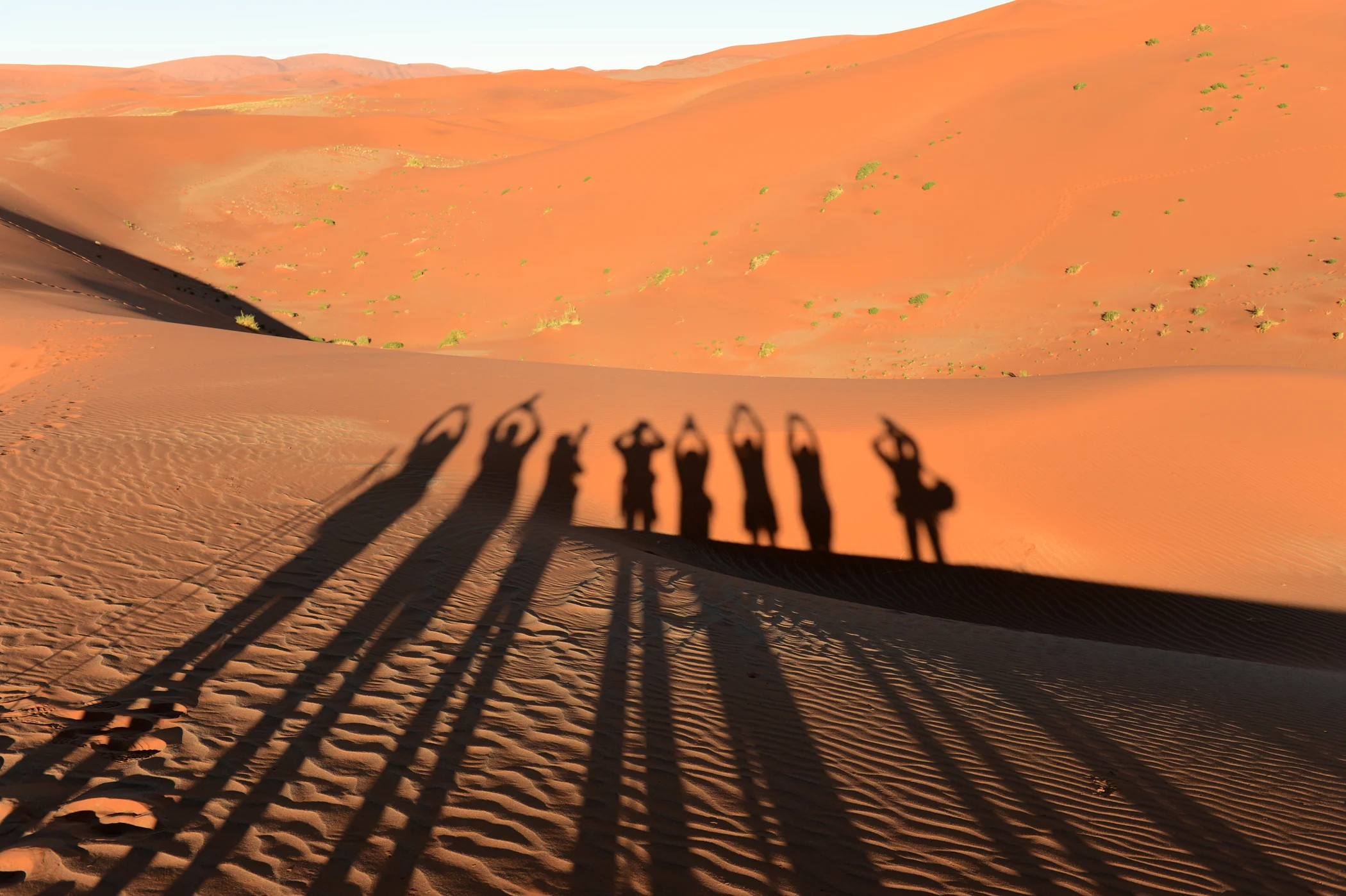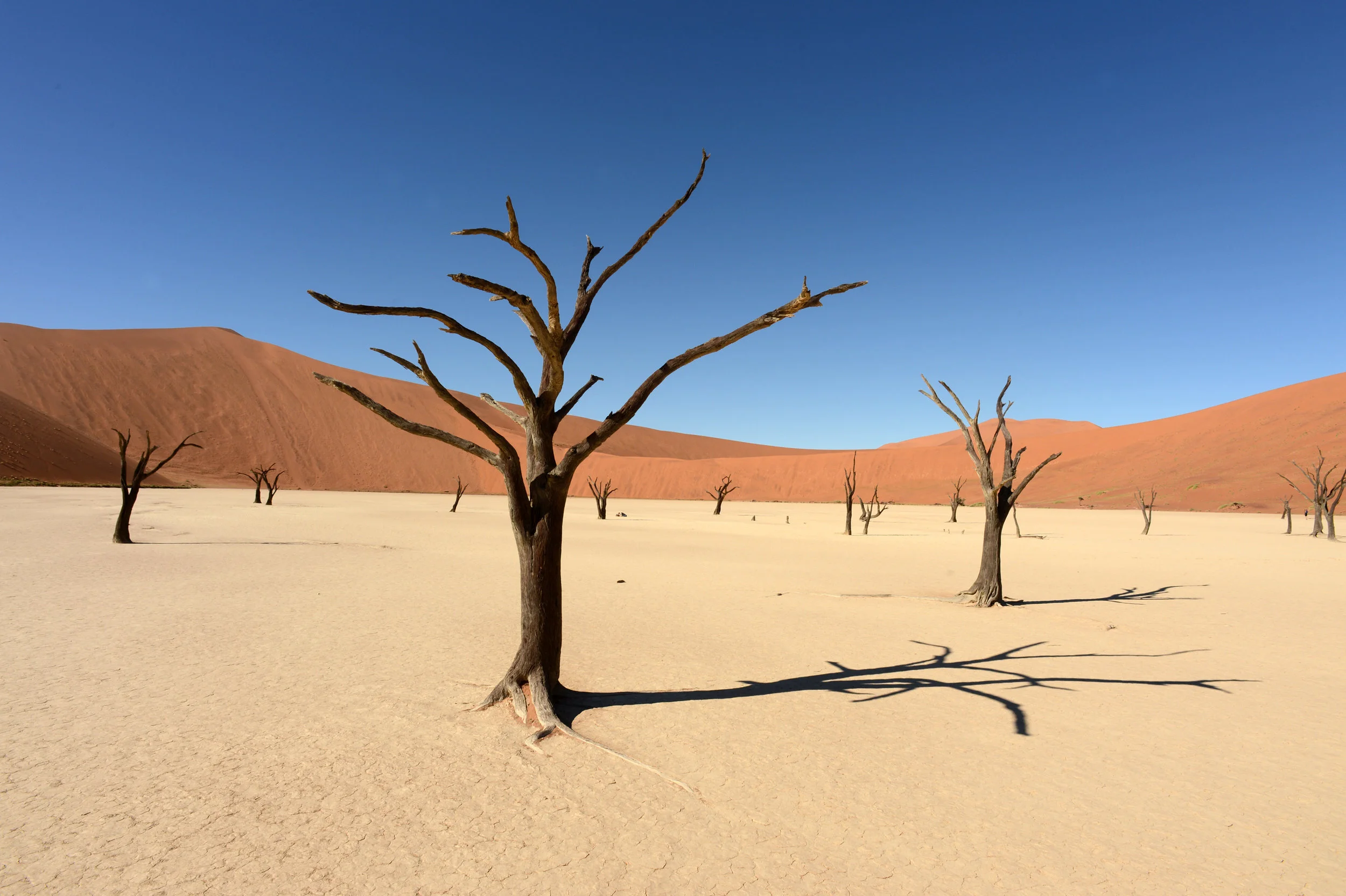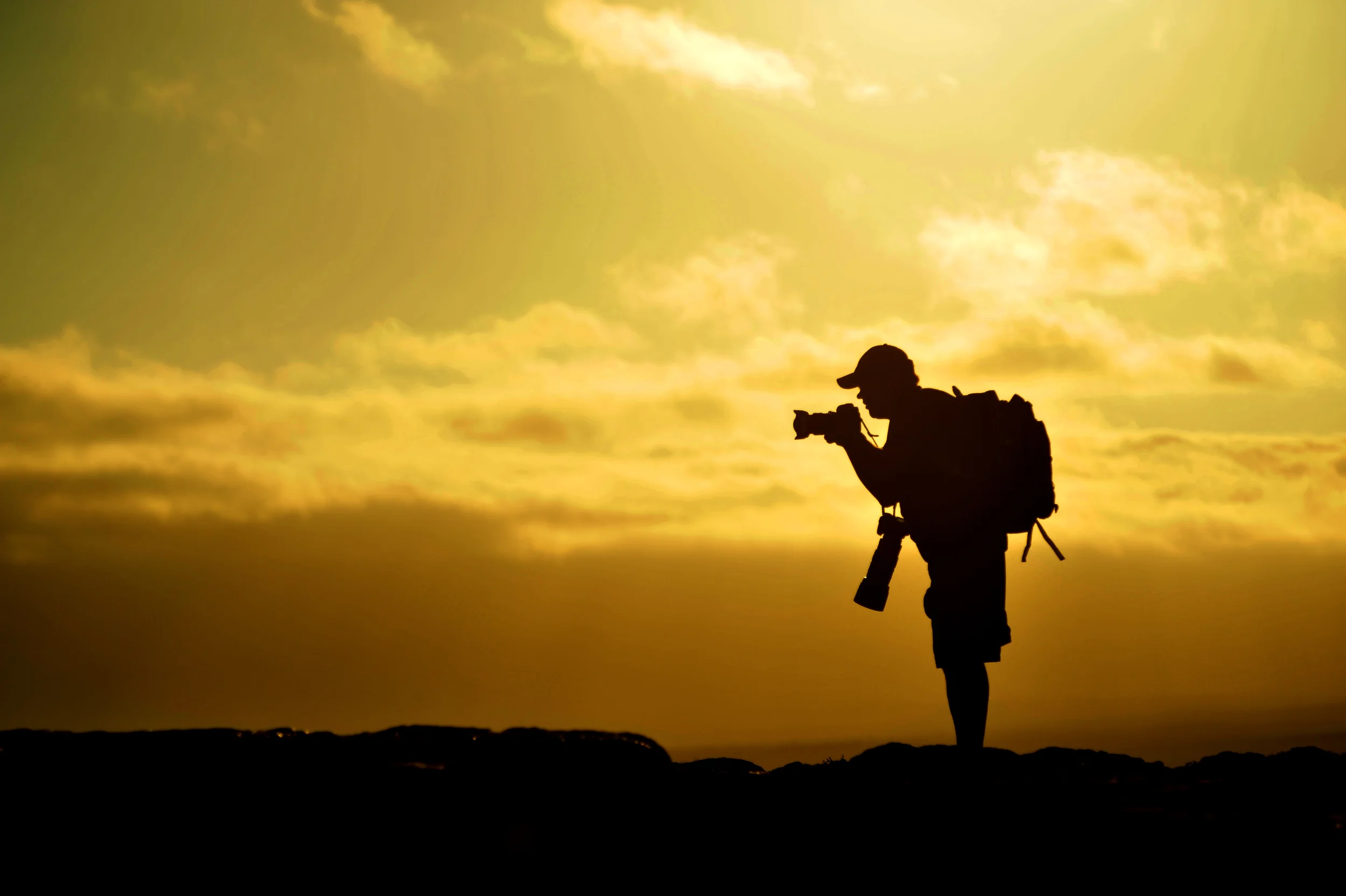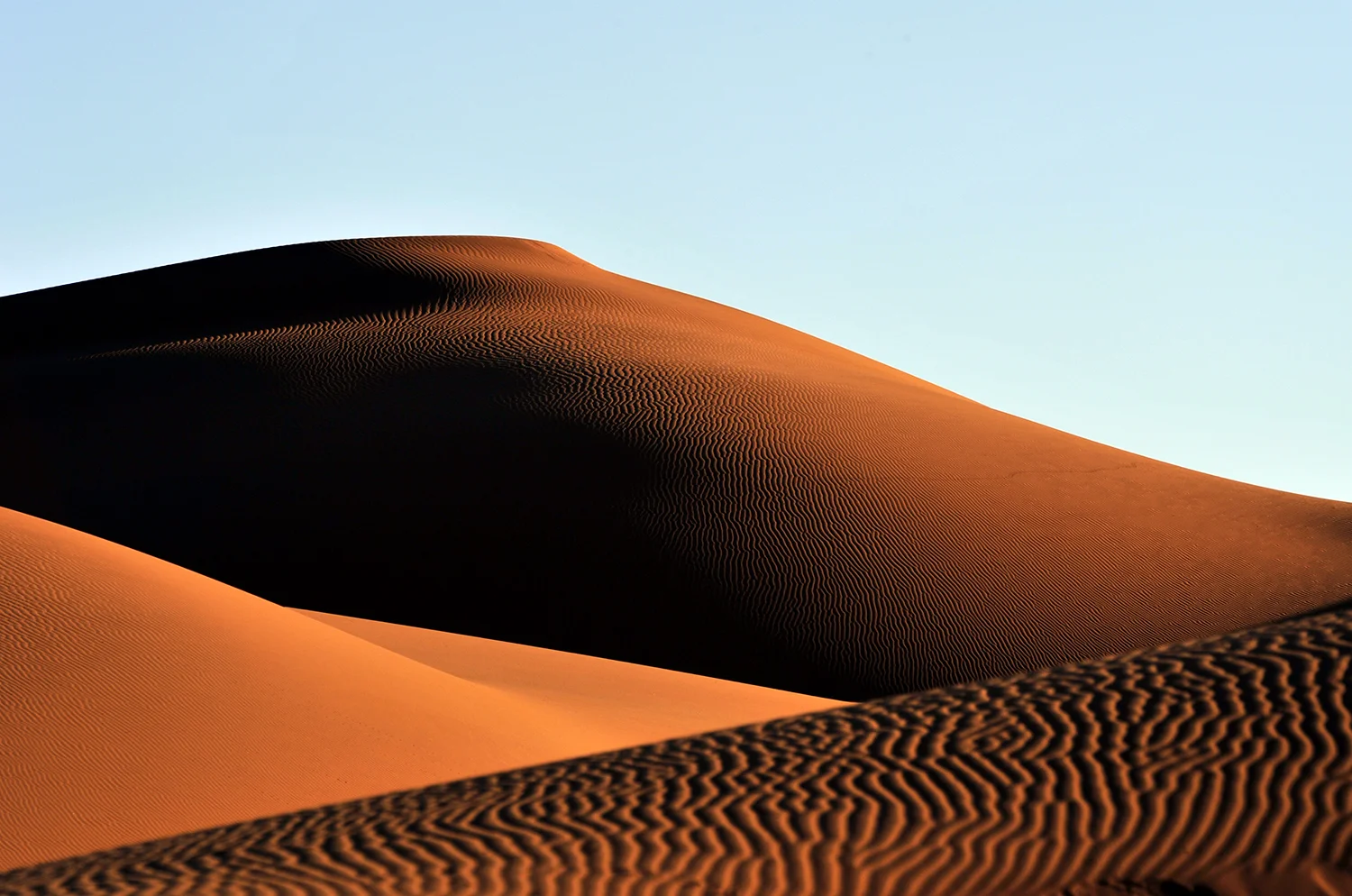







NAMIBIA FLY-IN SAFARI
NAMIBIA FLY-IN SAFARI
NAMIBIA fly-in safari
June 10 - 21, 2022
HIGHLIGHTS
Namibia has an incredible variety of wildlife safaris, amazing landscape photography in the Namib desert with its beautiful red dunes and the highlight in Namibia is to photograph the Himba Tribes. The Himba women paint their bodies with red ocra and have beautiful braided hair.. It is a huge country but traveling by chartered flights is the way to go plus it gives you another photo op to capture beautiful aerial shots of the landscapes.
Chartered Flights for More Time on Safari
We arrange light aircraft transfers to maximize your time on safari with wildlife, rather than negotiating rough and dusty roads between destinations. From the air, you’ll gain a whole different scenic perspective on Namibia’s vast and dramatic landscapes.
Two Sunrise Excursions to Photograph the Sossusvlei Dunes
Most Namibia safaris spend just one day at the magnificent dunes of Sossusvlei, the tallest sand dunes in the world. We have built in two full shoots here, for double the opportunity to photograph this iconic landscape by the day's first, best light.
Remote Luxury Accommodations in Harmony with the Land
The isolated luxury camps we’ve chosen for this safari are truly exceptional. Each is seamlessly integrated into the natural environment in a way that allows you to be fully absorbed into the stunning and diverse landscapes we visit.
explore
Photograph the ghost town of Kolmanskop
Photograph the Himba Tribes
Capture the Quivertree Forest for sunset and night photography
discover
Namib Naukluft National Park and the largest sand dunes in the world
Guided game drives through Etosha each morning and evening
Deadvlei and the dancing dead camel thorn trees
learn
Camera settings for beginners
Portrait lighting techniques using one flash
How to tell a story with your images
How to pose and photograph locals
Metering and exposure
Low light shooting
Use of filters
Learn how to shoot the Milky way, Star Trails and Time Lapses

Itinerary
Itinerary
NAMIBIA fly-in safari
June 10 - 21, 2022
June 10 – Depart the USA to Windhoek, Namibia (WDH).
Depending on your location, you may have to depart on June 9th to get there by June 11th. The best way to fly from the USA is through Frankfurt, Germany and connect to the 9:45 PM overnight flight on Lufthansa LH4356. You will have a 10 hour long lay-over in Frankfurt.
June 11 – Arrive in Windhoek, Namibia
Arrive into Windhoek International Airport (WDH) on June 11th. You will be met by your guide and transferred to the hotel in Windhoek, the capital of Namibia and geographical center of the country. Once colonized by the Germans with a complex and intertwined history, this city is quite culturally diverse. Dinner at the and one overnight stay at the Hilton Hotel.
June 12 - Fly to Keetmanshoop-Quivertree Forest
In the morning we fly from Windhoek to Keetmanshoop and the Quivertree Forest for sunset and night photography. The Quiver Tree is one of the most interesting and characteristic plants of Namibia are very hot and dry southern regions. The name Quiver Tree refers to the traditional use of the branches by Bushmen and Hottentots tribes to make quivers for their arrows. Overnight at the Quivertree Forest Rest Camp.
June 13 - Kolmanskop Ghost Town
We make the short ride to the coastal village of Lüderitz and spend the afternoon and evening photographing the famous Kolmanskop Ghost Town. The houses of Kolmanskop have been slowly overtaken by the desert and the floors are sand but are in good shape otherwise. Overnight at the Lüderitz Nest Hotel.
June 14-15-16 Namib Desert-Sossusvlei-Deadvlei
After a morning shoot at Kolmanskop once again, we drive north into the Namib Desert, traversing through spectacular scenery of the Tiras Mountain Conservancy and a section of the NamibRand Nature Reserve before entering the Namib Naukluft National Park to reach the Sossus Dune Lodge. For the next three days we will explore the remarkable Namib Desert. These days will include morning photography of the world’s tallest dunes of Sossusvlei contrasting with the white clay saltpan and haunting ancient dead trees of the Deadvlei.
Sossus Dune Lodge is the only lodge that affords you prime location within the boundaries of the Namib Naukluft National Park and the largest sand dunes in the world. Namib Naukluft National Park is also the home of Deadvlei and the dancing dead camel thorn trees.
June 17-18 Fly-In Safari from Namib desert to Okutala airstrip for Okaukuejo-Etosha National Park
Transfer to Swakopmund Airport to fly north and east to the Eastern boundary of the vast wildlife sanctuary of the Etosha National Park where you will stay in tented safari luxury for two nights. After your arrival at the airstrip you will be transferred to the where you will settle into your safari tents. Late afternoon you will head into Etosha for your first exciting guided game-drive with window seats and pop up roofs to ensure prime access to ideal photo ops. The park covers an area of 22,270 km and is home to 114 mammal species, 340 bird species, 110 reptile species, 16 amphibian species and one species of fish. During the game drives you will have the opportunity to experience and photograph a variety of wildlife against the vast, silver-white backdrop of shimmering mirages, verdant grasslands and thorn scrub. Some of the wildlife you will see includes: zebra and springbok, endangered black rhinoceros, lions, elephants and large numbers of antelope. Overnight Okaukuejo Rest Camp two nights.
June 19,20 – Drive to Hoanib Valley Camp
The Kaokoveld is home to the nomadic Himba tribe as well as uniquely desert adapted Elephant, lion, black rhino and giraffe.
During your stay you will go on two Himba village photo shoots where you will have the opportunity to hone your environmental portrait photography as you immerse yourself in the daily lives of the Himba people – one of few Nomadic tribes left in the world who live and dress according to ancient traditions. Overnight Hoanib Valley Camp.
June 21 – Fly from Hoanib Valley to Windhoek
Return flight to Windhoek International Airport in time to check in for your departure flight. PLEASE NOTE: departure flight must be after 5pm or early evening to allow time for the return flight and the two-hour check-in stipulated by airlines.
*Itinerary is subject to change.

Lodging
Lodging
NAMIBIA fly-in safari
June 10 - 21, 2022

Facts
Facts
NAMIBIA fly-in safari
June 10 - 21, 2022
About Namibia
Aside from being the most photogenic country in Africa, if not the world, Namibia is a vast and sparsely populated country. This otherworldly destination straddles two massive deserts – the Namib along its south Atlantic coast and the Kalahari in the east and stretches1300 km from north to south bordering South Africa, Angola, Zambia, Botswana and Zimbabwe. Aside from boasting a diversity of cultures, national origins and colonial cities, Namibia is the first country in the world to incorporate the protection of the environment into its constitution where at least 14% of the land is protected, including virtually the entire Namib Desert coastal strip. This care for the land also coincides with Namibia’s strict protection of some of the most unique wildlife in the world.
covid
Passengers must have:- a recovery certificate issued at most 3 months before arrival; or- a COVID-19 vaccination certificate showing that they were fully vaccinated at least 14 days before arrival; or- a negative COVID-19 PCR test taken at most 72 hours before arrival. The test results must be uploaded at https://globalhaven.org/or http://trustedtravel.panabios.org. This will generate a travel code that must be presented upon arrival.
GERMANY - TRANSIT PASSPORT
Passengers entering or transiting through Germany must have:- a negative COVID-19 antigen test taken at most 48 hours before arrival; or- a negative COVID-19 LAMP, NAAT, PCR, test taken at most 48 hours before departure from the first embarkation point.The test result must be in English.
This does not apply to passengers with a COVID-19 vaccination certificate showing that they were fully vaccinated at least 14 days and at most 270 days before departure, or they were fully vaccinated and received a booster dose. Vaccines accepted are: AstraZeneca, Moderna and Pfizer-BioNTech. The certificate must be in English.
This does not apply to passengers with a COVID-19 vaccination certificate showing that they received:- two doses of Janssen at least 14 days and at most 270 days before departure; or- one dose of Janssen and one dose of Moderna Pfizer-BioNTech at least 14 days and at most 270 days before departure; or- one dose of Janssen, one dose of Moderna or Pfizer-BioNTech (Comirnaty), and a booster dose of Moderna or Pfizer-BioNTech.
Etosha National Park
Etosha National Park is one of Southern Africa’s finest and most important Game Reserves, which was declared a National Park in 1907. The park covers an area of 22,270 km and is home to 114 mammal species, 340 bird species, 110 reptile species, 16 amphibian species and one species of fish. In the vast arid space of Northern Namibia, Etosha National Park offers excellent game viewing in one of Africa’s most accessible venues. Zebra and springbok are scattered across the endless horizon, while the many waterholes attract endangered black rhinoceros, lion, elephant and large numbers of antelope. Etosha, meaning ‘place of dry water’, encloses a huge, flat dry depression (or pan) of about 5 000km. The ‘Pan’ provides a great, parched, silver-white backdrop of shimmering mirages to an area of semi-arid savannah grassland and thorn scrub. The pan itself contains water only after very good rains and sometimes for only a few days each year, but is enough to stimulate the growth of a blue-green algae which lures thousands of flamingos – a great photo op at the least!
Namib Desert
The Namib Desertis the oldest desert in the world stretching the length of the country along the whole west coast with the highest sand dunes in the world and rugged canyons. The seemingly endless sea of vivid red sand, expansive gravel plains, and rugged riverbeds is home to an assortment of species specially adapted to this hot and dry environment.
Language
English is the official language, but Afrikaans is actually the most common language spoken by Namibians, including about 60% of the white population. German is spoken by 32% of the population. Indigenous languages include Oshivambo, Herero and Nama. Namibia’s relatively small population is quite diverse in language and culture. More than 11 languages are indigenous to Namibia but with its cosmopolitan society, languages from around the world are spoken in Namibia. People commonly speak two or three languages and more than 50% of the population speaks Oshiwambo.
Weather
In general Namibia has adesert climate with hot, dry temperatures and sparse and erratic rainfall. There is some climatic variation based on which geographical subdivisions you are in and you will experience almost all of them on this workshop.
CLOTHING
Since the temperature during this workshop will fluctuate a bit depending on what region you are in, a variety of clothing is recommended including shorts, t-shirts, a hat and then warmer clothing including a light weight fleece for the early mornings and nights in the desert. As always, we recommend lightweight but warm, wicking layers since they perform well in a variety of temperatures and are to pack. And always pack a waterproof, wind breaking shell just in case of rain and/or strong winds. Also, don’t forget your sunscreen for those sunny desert days. Laundry can be done at every Lodge.
Currency
The Namibian Dollar (N$) is not freely exchangeable outside of the country, so you will not be able to get local currency before you arrive. The Namibian Dollar is the local currency and is on par with the South African Rand. One Namibian Dollar is divided into 100 cents. The South African Rand is still accepted as legal tender in Namibia.
PASSPORT AND VISA REQUIREMENTS
Anyone traveling to Namibia must have two consecutive blank pages in their passport, which lie side by side when the passport is open (i.e. left and a right hand page). Passports must also be valid for at least six months. A visa can be obtained on arrival at the airport in Windhoek.
FOOD
Namibian cuisine consists of game such as venison, beef, antelope, zebra or ostrich cooked on braai ( barbecue). Seafood, mostly oysters, is available from the country's coastal region. The influence of German colonial period is evident in the variety of sausages, breads, cakes and pastries and the South African influence can be seen in foods such as biltong (air-dried meat). Traditional food includes porridge and soup made from cornmeal, millet or cassava, supplemented by fish or meat stew, vegetables and milk products. The national drink of Namibia is the Tafel lager and Windhoek lager.
Health
This workshop goes through a malaria area. Please consult your physician about anti malaria prophylaxis and find out what malaria tablets you need, and when you need to commence the course. Also check with your physician to ensure that all of your vaccinations are up to date.
Miscellaneous
International Telephone Code - 00 264 + area code + number
Time - Namibia is one hour ahead of GMT in the winter months, April to September, and two hours ahead of GMT from October to March.
Lugagge
Only soft bags will be accepted – no frames or rigid structures. Wheels on a bag are only permissible if they are not part of a solid frame or rigid structure. Luggage restrictions guidelines are 20 kg (44 lb) per person in a soft bag including both check-in luggage and carry-on luggage (handbag, backpack, camera equipment, sleep apnoea machine etc.), and within the relevant dimensions.
Laundry will be done on arrival at each lodge.
We require the individual body weights of ALL guests prior to travel.
Plastic Bags
Plastic Bag usage within the National parks
Namibia Wildlife Resorts (NWR) would like to inform you that with immediate effect plastic bags are no longer allowed within all Namibia National Parks. Therefore, any plastic bags that might be in your possessions will be removed by the Ministry of Environment and Tourism personnel when you enter any of the National Parks.

Quest Leaders
Quest Leaders
NAMIBIA fly-in safari
June 10 - 21, 2022
MIRJAM EVERS
Mirjam is a New York City based travel photographer specializing in international environmental portraiture, landscape photography and adventure images. Born and raised in the Netherlands, she has photographed in more than 75 countries, including many of the most exotic places in the world. Mirjam's photographs are indicative of her unique capacity to personally connect with diverse cultures and communities. Her eye for location lighting is highly stylized and works to illustrate and heighten the unique characteristics of each international locale. She is able to transcend cultural and language barriers with an intangible spirit that is conveyed in every image. Her work has appeared in AFAR, The New York Times, AARP, Outdoor Photographer, PDN, American Photo, Popular Photography, Digital Photo, Departures, MSN Travel.

Quest Gear
Quest Gear
NAMIBIA fly-in safari
June 10 - 21, 2022
Recommended gear
Computer / Digital Accessories
Portable hard drives
Card reader
All cables for drives, computer, card readers, storage devices, etc.
Power converters/adapters for all international quests
Other
Cover or large zip-lock bag for camera for shooting in the desert
Sturdy tripod (carbon fiber)
Cable release (for night shots)
Small headlamp and flashlight
Your camera’s manual
Camera Gear
Camera and extra body
Battery charger & extra batteries
Memory cards (bring plenty!!!)
Sensor cleaning supplies
Flash with plenty of batteries
Wireless transmitter for Flash
Lenses
24-70mm for portraits or similar
70-200mm lens or similar
For night photography: fast/wide lenses like 14mm 2.8, 20mm 1.8 or 16-35 and 24-70 2.8
Your AF lenses must have a manual focus setting for night photography
Polarizing filter(s)
Lens hoods for all lenses
Lint-free cloth to clean lenses and blower ball for dust

Pricing
Pricing
NAMIBIA fly-in safari
June 10 - 21, 2022
Cost per person
$15,800 based on double occupancy.
Limited to 4 participants.
Not included
International Flights to and from Windhoek, Namibia
Personal insurance
Visa Fees
Tips & Gratuities
All expenses of a personal nature
All optional excursions and activities
Included
Lodging based on double occupancy
All domestic flights
Laundry
All meals
All National Park and other entry fees
Local departure taxes, fuel and airport/airstrip transfers
Transport in air-conditioned 4x4 safari vehicles and the services of professional guides
Mineral water in the safari vehicles
We highly recommend that you purchase travel insurance.
For the health and safety of our travelers, proof of vaccination or a negative PCR viral COVID-19 test result within 72 hours of departure is required. We urge everybody to get vaccinated asap. It is mandatory to have "Cancel for Any Reason" travel insurance on all of our trips.
COVID-19 Update: February 2, 2022 - Proof of Vaccination is required for Travel with Photo Quest Adventures.
As worldwide travel has resumed (albeit not in all destinations), our intention is to operate different photography tours throughout 2022, as conditions permit. At all times, however, the well-being of our guests and staff will continue to be our highest priority. For all of our photo tours and workshops, CDC-approved vaccinations are required. (Pfizer, Moderna, AstraZeneca or Johnson and Johnson vaccines). If you are medically unable to be vaccinated, you must bring a negative PCR COVID test with you taken not more than 48 hours from the start of the workshop. At PQA, we operate our photography workshops and tours with the safety of our participants and guides as our highest priority. Our staff, leaders and local guides are all vaccinated and boosted. Our PQA Staff members are also certified Covid Compliance Officers and will travel on each Quest to make sure safety protocols are implemented. In response to the Covid-19 pandemic, we are taking extra precautions to protect our Questers, guides, and the communities we visit. We are closely following new developments and will adjust our response accordingly. Please read more here.
















